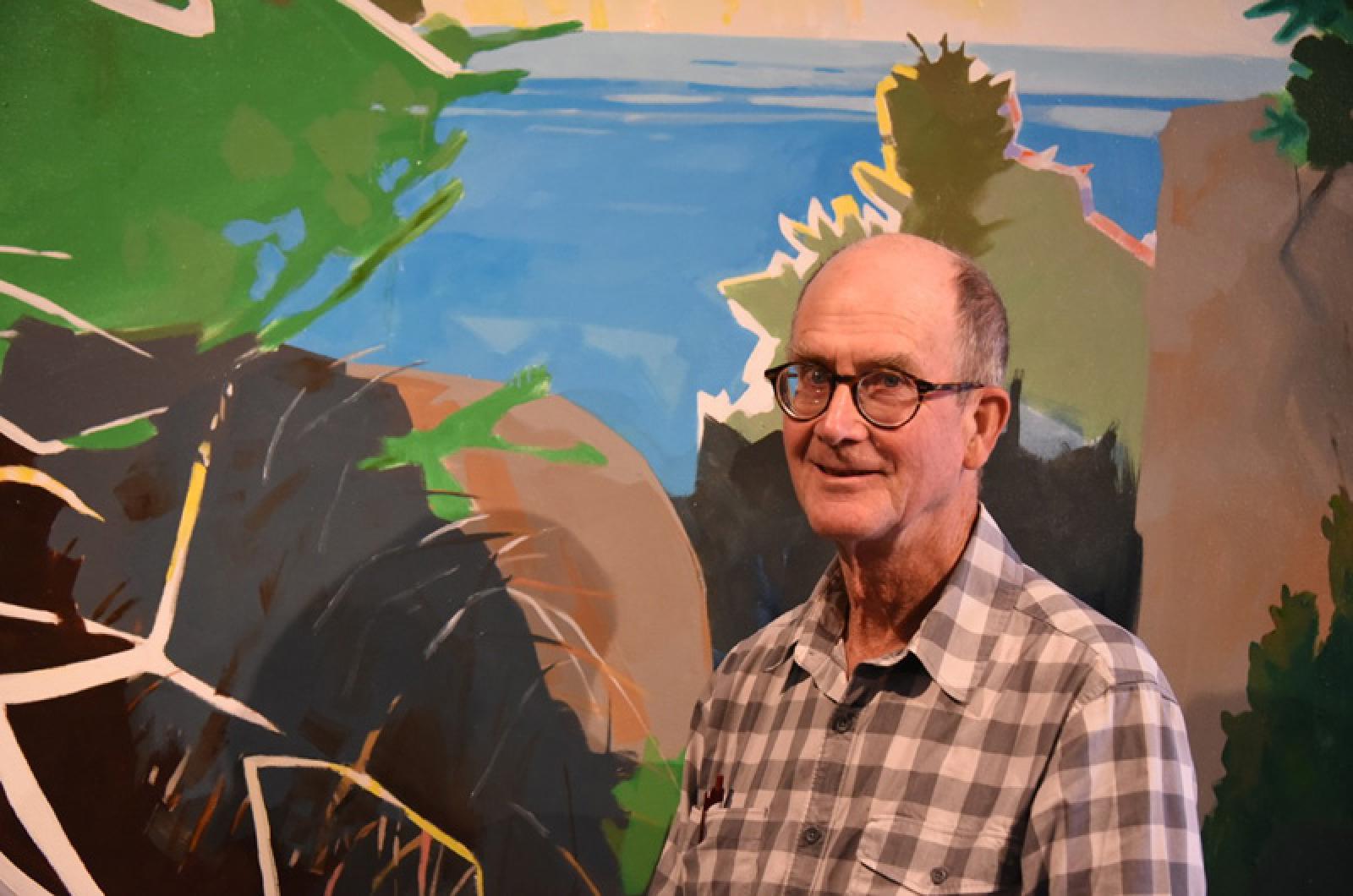I never met Rez Williams, the revered Vineyard artist who died in February. Nevertheless, he was a kind of hero for me, an artist rooted in a place and community who found his subjects literally at his doorstep.
“It takes time to see,” Georgia O’Keefe once said, and Rez Williams never tired of looking at this Island. He was a local artist in the same sense that O’Keefe was local; both of them found new, dramatic, startling power in scenes that were worn threadbare by familiarity.
His paintings could never be confused with the pretty, saccharine seascapes found on the walls of rental properties. In 1995, Thomas Hoving, director of Metropolitan Museum of Art, called him “one of the best American artists alive today ... His scenes of the Vineyard smash into your eyes like crescendos. The spaces warp and move. The colors clash and rebound.”
Anyone who’s been to the Martha’s Vineyard Hospital has probably experienced this collision first-hand. Remember the picture of the green-hulled boat that looms at the end of the hospital’s main corridor? The painting is a Rez Williams, and the boat, My Way, is named for the song Frank Sinatra made famous. The picture of Sinatra on the bow, cigarette clenched in his teeth, adds a note of humor to an image that’s bold, aggressive, jolting.
As in many of Rez’s boat paintings, you see the boat from water level, looking up like a swimmer at a vessel that appears to be massive and might run over you in the next second.
I first became aware of Rez Williams in the late 1980’s, when good friends from Washington bought a piece of land from him. Rez had built the house on the property, using lumber from trees he’d cleared. In those days, a lot of Island houses were owner-built, counter-culture houses that reflected the personality of the owner, and Rez’s house, situated at the top of a small hill, made up of unexpected forms and angles, imposed its looming, jutting outline against the sky.
Having built my own self-designed house of log and stone in the mountains of Virginia, I recognized in Rez a kindred spirit. He wasn’t a native Islander, but he and his wife, the artist Lucy Mitchell, were part of a significant migration of artists, musicians, craftsmen, boatbuilders, writers, adventurers and misfits who washed ashore in the 1960s and 1970s. They came here looking to get away from the regimentation and routines of the cities and suburbs, the corporate structures, the group-think and the nine-to-five jobs. In short, they wanted to set the terms of their own lives.
That had been my aspiration, too, but after one novel and one winter in the mountains, I needed a steady paycheck. I took a series of university teaching jobs, and soon became a worker in the Creative Writing Industrial Complex.
I kept visiting the Vineyard frequently. Of course I idealized the place. The Island’s flourishing community of artists were on the road I hadn’t taken. Here the counterculture seemed to have established a foothold, and people like Rez Williams weren’t just marginal figures; they were engaged in the community, bringing fresh perspectives and energy to the Island’s creative heritage. To my mind, the artists were an essential reason the Vineyard was more than just another beach resort. They were the yeast in the dough, the mustard on the hot dog, the wind in the sails.
In the headline of his obituary in this paper, Rez was hailed as an “Island artist and conservationist.” He was a long-serving board member of the Vineyard Conservation Society, and a president of the Sheriff’s Meadow Foundation, for which he did a series of paintings that have been reproduced in marvelous posters. Look at them once and you’ll see Squibnocket Pond and Cedar Tree Neck as you’ve never seen them before.
Over the last several weeks, I’ve created my own Rez Williams Trail, seeking out his paintings in the hospital, the museum, the Port Hunter restaurant. Visiting his work and reading the tributes of his many friends has reminded me of Lewis Hyde’s book, The Gift: How the Creative Spirit Transforms the World, a key text for many in the counterculture. In it, Hyde examines the critical distinction between a work of art produced as a commodity and offered for sale, and a work of art that is conceived as a gift. In the gift economy, the artist does not work for his own self-aggrandizement but for the benefit of the community.
Based on everything I know about Rez, this is exactly how he approached both his art and his commitment to conservation: as gifts to the Island community.
And not only to the present community. Artistic works, Hyde says, can have long-lasting, ripple effects that are passed along both horizontally and vertically, to neighbors and to future generations. Even as they become a part of the collective memory of a place, they continue to shape and transform the experience of new members of the community, often in ways that the giver could not have foreseen.
For me, following the career of Rez Williams from afar, he always seemed like an essential Vineyard archetype, someone who was both the custodian and creator of an Island ethos. I always felt better about this place knowing that he was around somewhere, painting those astonishing paintings, doing his bit to keep the Island spirit bright and beckoning.
Stephen Goodwin lives in Vineyard Haven.







Comments (2)
Comments
Comment policy »